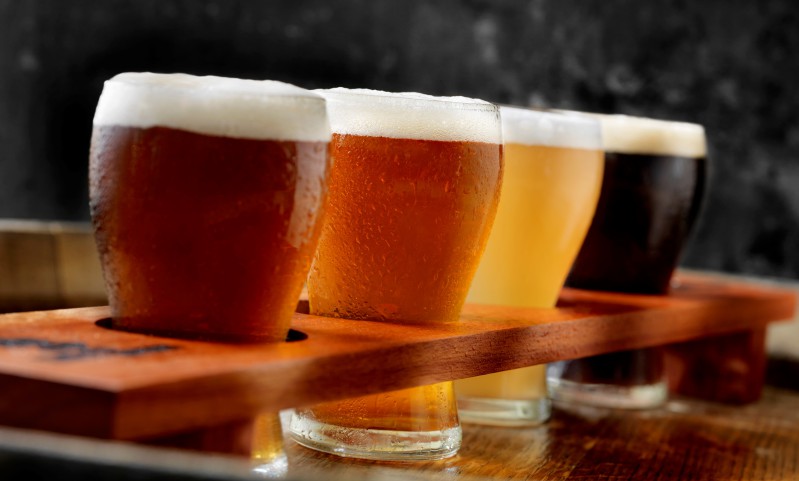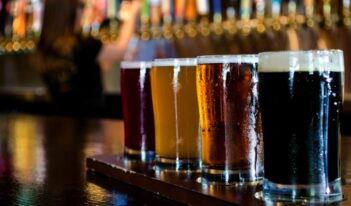
Scholars discuss beer regulations and the regulatory challenges facing the industry.
Feeling thirsty?
Consumers across the world drink nearly 190 billion liters of beer each year—the equivalent of 76,000 Olympic-sized swimming pools. With a global market worth over $600 billion last year, the beer industry is expected to grow as consumers continue to guzzle one of the oldest drinks on earth.
The Sumerians of ancient Mesopotamia are the first society known to produce beer, although historians suggest beer likely existed much earlier. Beer is an alcoholic drink made from fermented cereals such as barley and flavored with hops. Because the fermentation process killed bacteria, beer was often safer to drink than water and was prevalent throughout several ancient civilizations. The earliest known beer recipe, the “Hymn to Ninkasi,” is etched into a 4,000-year-old cuneiform tablet and continues to serve as an inspiration to some modern-day brewers.
Since those first batches thousands of years ago, the recipe for beer has been tweaked and tinkered with to create dozens of styles and flavors that range from citrus and fruity to caramel and chocolate.
In the United States, the Alcohol and Tobacco Tax and Trade Bureau, a division of the U.S. Department of the Treasury, mostly regulates beer at the federal level. The Bureau of Alcohol, Tobacco, Firearms and Explosives, a division of the U.S. Department of Justice, maintains some regulatory compliance authority as well.
There are over 100,000 federal regulations that affect the American beer supply chain. In addition, each state maintains jurisdiction over beer production and distribution within its borders and there is substantial regulatory variation among the states. For instance, South Dakota has the fewest additional regulations with only 1,177 while California leads with over 25,000. Complying with these regulations can leave breweries feeling hungover.
Despite the complexities of navigating both federal law and a patchwork of state regulations, craft breweries—smaller and independent breweries—continue to barrel forward. The rise of beer has sprouted a host of other industries as well, such as Brooklyn-based TapRm that uses a unique licensing structure to distribute hard-to-find brands across states.
In this week’s Saturday Seminar, scholars discuss competition in the beer industry, the rules surrounding advertising beer, and how regulations have allowed the craft beer industry to thrive.
- Craft breweries in Seattle collaborate and cooperate extensively with each other even though the market is bustling with competition. Using qualitative empirical research, Zahr K. Said of the University of Washington School of Law seeks to explain this counterintuitive phenomenon in a Lewis & Clark Law Review article. Said posits that one reason craft breweries cooperate and engage in collective innovation is that they all share the common enemy of “Big Beer”—the “multinational beverage conglomerates that dominate the field globally.” Through her interviews with nearly two dozen Seattle breweries, Said also suggests that this cooperation builds a sense of “collective identity,” which can be a useful tool in enforcing individual breweries’ intellectual property rights.
- The alcohol industry largely self-regulates its advertisements based on industry trade association guidelines. In an article in Alcohol and Alcoholism, Jonathan K. Noel of Johnson & Wales University and Thomas F. Babor of the University of Connecticut School of Medicine evaluate beer advertisements on Facebook to see if they comply with advertising guidelines. Noel and Babor find that beer advertisements frequently violate industry code, indicating that the beer industry’s self-regulation mechanisms are insufficient. Noel and Babor suggest that the government may need to take a more active role in regulating beer advertising to protect public health.
- In a Northwestern University Law Review Online article, Daniel J. Croxall of the McGeorge School of Law argues that commercial speech regulations have allowed craft beer to gain market share while competing with Big Beer. He notes that following the ratification of the 21st Amendment the states adopted “tied-house” laws that prevented “any ownership interests between the three tiers of alcohol manufacture, distribution, and sale.” Croxall argues that tied-house laws remain an important regulatory feature in maintaining a competitive beer market and cautions that without them, Big Beer could simply squeeze craft beer competitors out of retail advertising.
- Regulatory burden can harm business growth, particularly in food and beverage industries. In a working paper, Aaron Staples and Trey Malone of Michigan State University, along with Dustin Chambers of Salisbury University, examine the distribution of regulatory burden by states on American beer supply chains. They find substantial variation in the number of regulations each state imposed on beer production. Staples, Malone, and Chambers call for further research into the quality of state regulations and suggest comparing state regulations to identify redundancies.
- As independent craft beer rises in popularity, Big Beer is increasingly engaging in anticompetitive business practices, such as purchasing independent craft breweries and leading consumers to believe they are buying craft beer, claims Daniel J. Croxall. In a Gonzaga University Law Review article, Croxall examines the beer industry in Washington and California, two states that have rigorous anticompetitive laws for alcoholic beverage companies. Although these laws empower private citizens to sue beer companies that engage in anticompetitive practices, private parties have not attempted to do so. Croxall urges consumers and independent craft brewery owners in Washington and California to start suing Big Beer corporations under state law to combat their deceptive and anticompetitive behavior.
- In a Hofstra Law Review article, attorney Christopher R. Deubert also notes that Big Beer corporations purchase craft breweries and attempt to prevent consumers from learning about the breweries’ true ownership. In addition, Deubert explains that Big Beer corporations sometimes design labels to make their product look like craft beer, another deceptive business practice. The Federal Alcohol Administration Act, however, prohibits beer manufacturers from misleading or deceiving consumers. Deubert examines New York State statutes that allow private parties to sue companies that deceive consumers. But, because plaintiffs could only recover the cost of the beer they purchased, Deubert concludes that this type of private enforcement is unlikely.
The Saturday Seminar is a weekly feature that aims to put into written form the kind of content that would be conveyed in a live seminar involving regulatory experts. Each week, The Regulatory Review publishes a brief overview of a selected regulatory topic and then distills recent research and scholarly writing on that topic.



